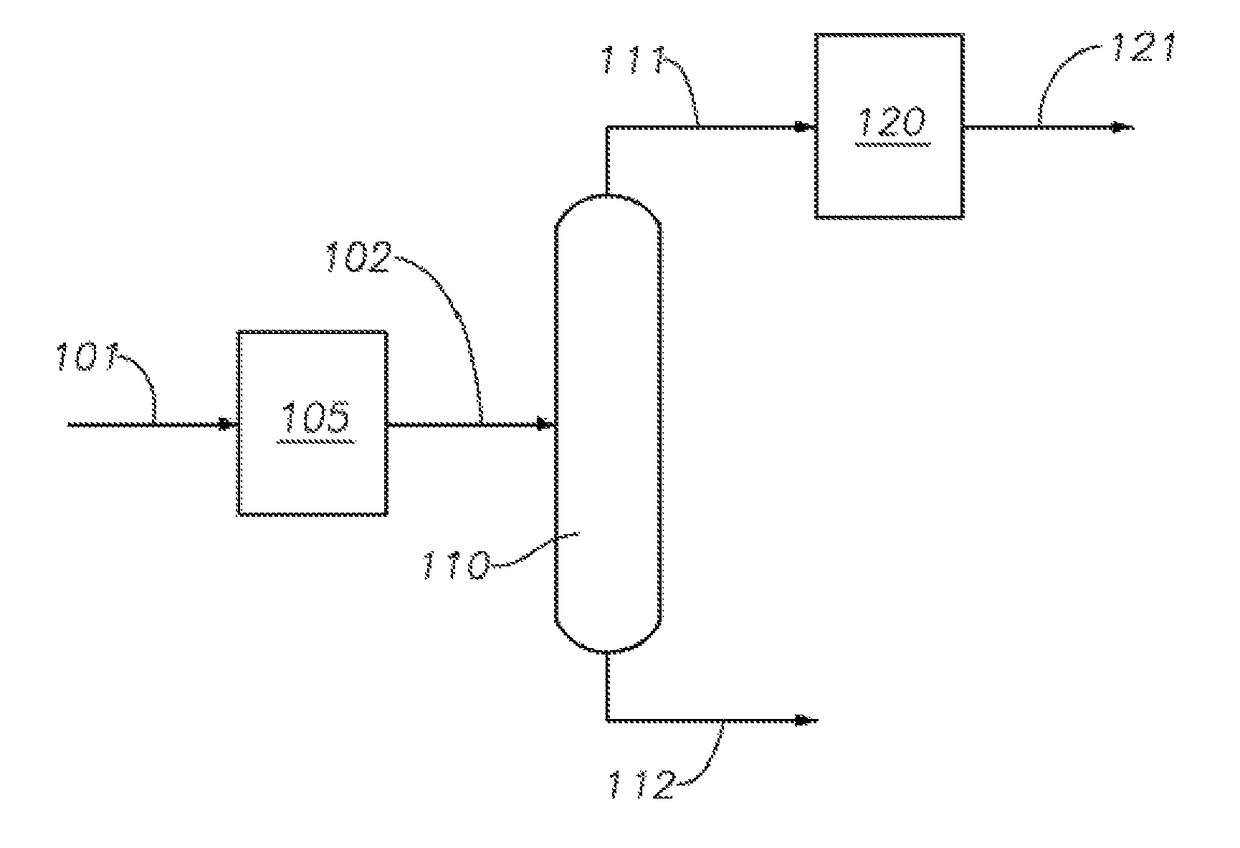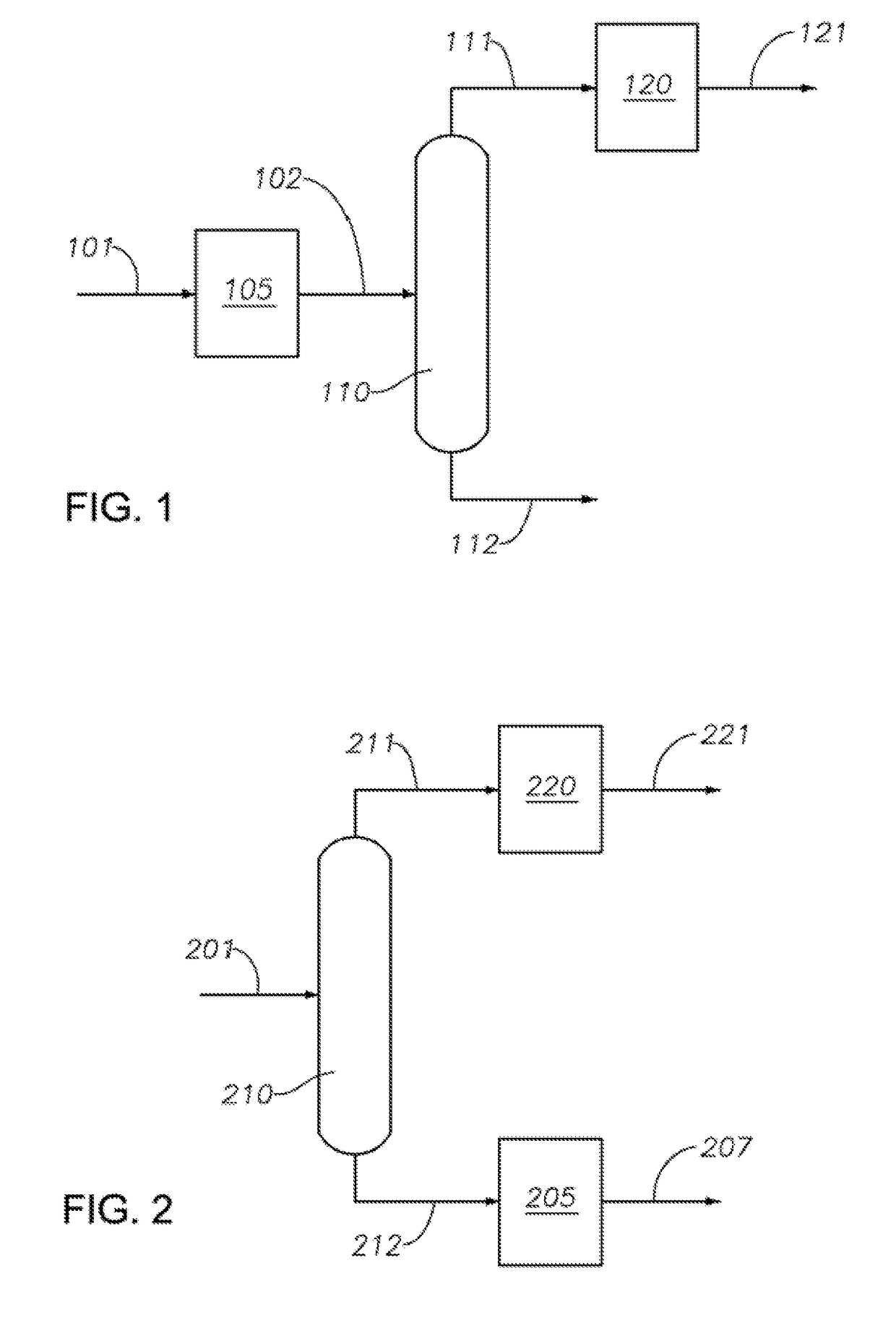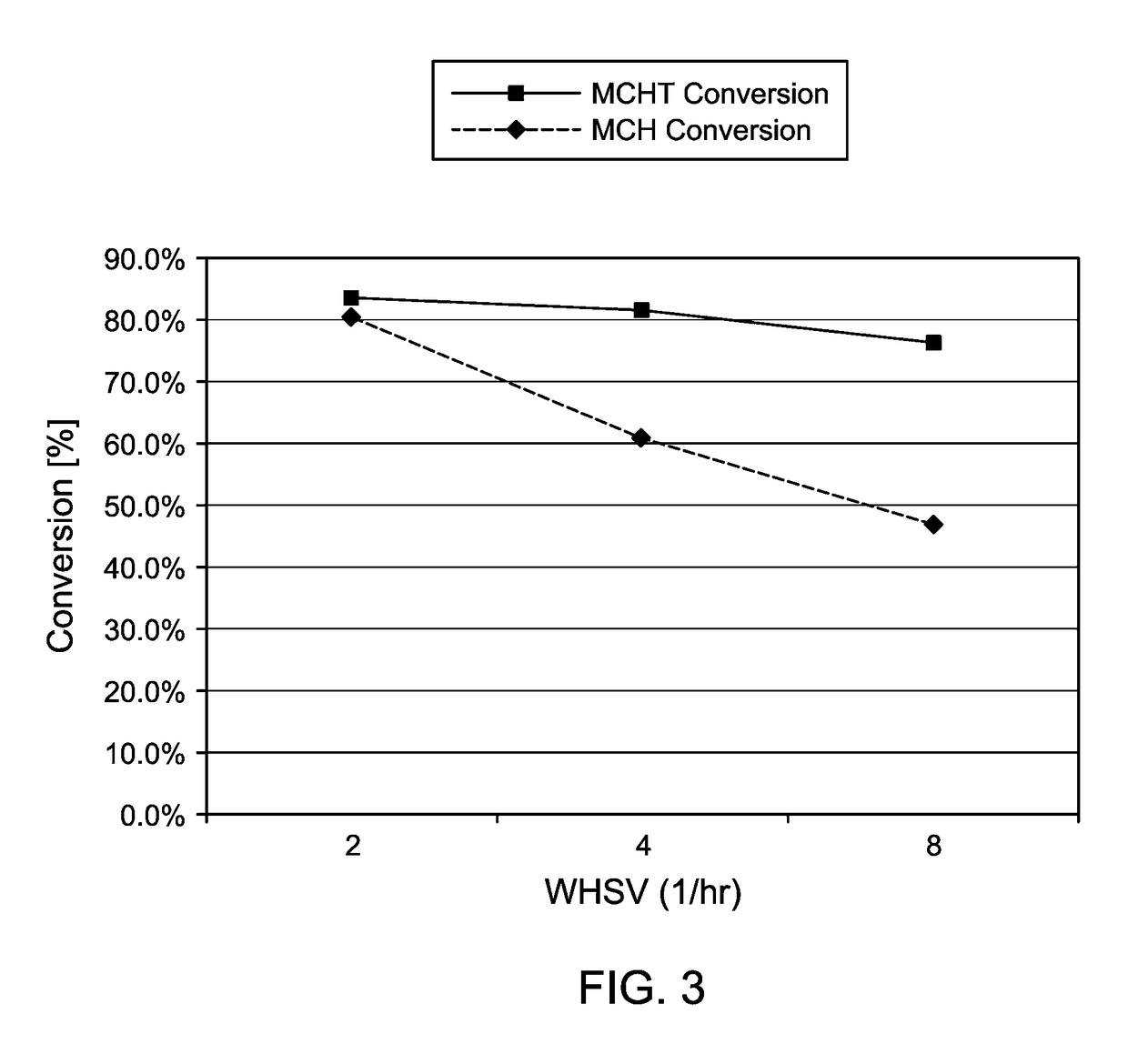Production of biphenyl compounds
a technology of biphenyl compounds and phenyls, which is applied in the preparation of carboxylic compounds, hydrocarbon preparation catalysts, hydrocarbon by addition and hydrogenation, etc., can solve the problem of reducing the use of phthalate esters as plasticizers in pvc, and achieve the effect of reducing the conversion rate of cn saturated cyclic hydrocarbons
- Summary
- Abstract
- Description
- Claims
- Application Information
AI Technical Summary
Benefits of technology
Problems solved by technology
Method used
Image
Examples
example 1
rocedure for Toluene Hydroalkylation
[0086]A palladium MCM-49 hydroalkylation catalyst was loaded into a hydroalkylation reactor. The reactor comprised a stainless steel tube having an outside diameter of: ⅜ inch (0.95 cm), a length of 20.5 inch (52 cm) and a wall thickness of 0.35 inch (0.9 cm). A piece of stainless steel tubing having a length of 8¾ inch (22 cm) and an outside diameter of: ⅜ inch (0.95 cm) and a similar length of ¼ inch (0.6 cm) tubing of were used in the bottom of the reactor (one inside of the other) as a spacer to position and support the catalyst in the isothermal zone of the furnace. A ¼ inch (0.6 cm) plug of glass wool was placed on top of the spacer to keep the catalyst in place. A ⅛ inch (0.3 cm) stainless steel thermo-well was placed in the catalyst bed to monitor temperature throughout the catalyst bed using a movable thermocouple.
[0087]The catalyst was sized to 20 / 40 sieve mesh or cut to 1:1 length to diameter ratio, dispersed with quartz chips (20 / 40 me...
example 2
nation of Hydroalkylation Reaction Effluent
[0090]Liquid hydroalkylation products were used as feed in a dehydrogenation reaction. The liquid hydrocarbon feed to dehydrogenation according to Example 2 comprised about 25 wt % (methylcyclohexyl)toluene (MCHT); about 8 wt % methylcyclohexane (MCH); about 66 wt % unreacted feed; and about 1 wt % byproducts. Three runs of the dehydrogenation reaction were carried out at different weight hourly space velocities (WHSVs)—in particular, WHSVs of 2, 4, and 8, corresponding to runs 2-1, 2-2, and 2-3, as shown in Table 1 (as shown in Table 1, WHSV was varied by varying the amount of catalyst loaded and maintaining the same feed rate).
[0091]
TABLE 1Dehydrogenations of Hydroalkylation Reaction EffluentAmount ofMCHMCHTRunCatalyst (g)WHSVConversionconversion2-11280.5%83.5%2-20.5460.8%81.5%2-30.25846.9%76.5%
[0092]The dehydrogenation was carried out at 430° C. and 100 psig in a dehydrogenation reaction system comprising 8 parallel reactors. An ISCO syr...
example 5
nation of Feed Comprising MCH and Toluene
[0104]Hydroalkylation effluent was dehydrogenated in the dehydrogenation reactor described in Example 3. The dehydrogenation product was distilled via batch distillation such that all heavier components, including the C14 MCHT and DMBP, were under 0.1 wt % in the overhead product of the distillation. This overhead product, comprising C7 hydrocarbons and toluene (7.8 wt % MCH, 91.9 wt % toluene, ˜0.3 wt % other species C11 and smaller, ˜0.1 wt % species over C11), was dehydrogenated in the same parallel reactor unit, and over a dehydrogenation catalyst, as described in Example 3. The light stream and H2 were fed at a 1:4 ratio at 2 WHSV into the reactor at 100 psig. As shown in FIG. 6, two different reaction temperatures were studied (400° C. and 450° C.). At 400° C., MCH conversion remained fairly stable, starting at around 80% and declining only slightly to about 70% after 300 hours on stream. At 450° C., MCH conversion remained steady at ne...
PUM
| Property | Measurement | Unit |
|---|---|---|
| temperatures | aaaaa | aaaaa |
| temperatures | aaaaa | aaaaa |
| pressures | aaaaa | aaaaa |
Abstract
Description
Claims
Application Information
 Login to View More
Login to View More - R&D
- Intellectual Property
- Life Sciences
- Materials
- Tech Scout
- Unparalleled Data Quality
- Higher Quality Content
- 60% Fewer Hallucinations
Browse by: Latest US Patents, China's latest patents, Technical Efficacy Thesaurus, Application Domain, Technology Topic, Popular Technical Reports.
© 2025 PatSnap. All rights reserved.Legal|Privacy policy|Modern Slavery Act Transparency Statement|Sitemap|About US| Contact US: help@patsnap.com



